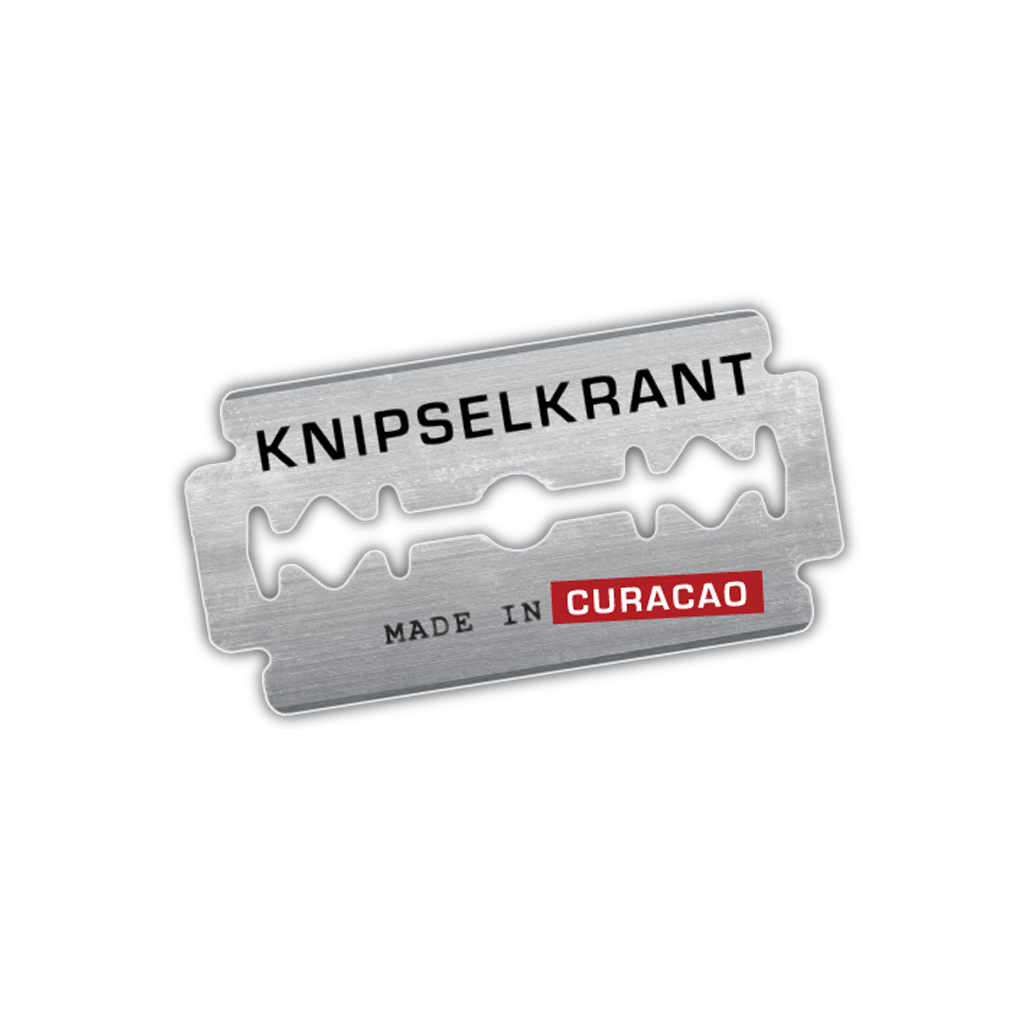A Speck on the Map Gushes Talent.
By DAVID WALDSTEIN
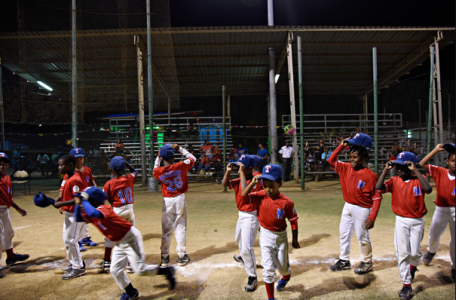
TERA KORA, Curaçao — Much of the ground in Curaçao is hard and sandy, full of pebbles and small rocks that are strewn everywhere, including the coarse-dirt infields of this small island nation’s many baseball fields.
If a ball strikes one — as it invariably does — it can fly off unpredictably. When Jurickson Profar, a shortstop in the Texas Rangers’ system who has been ranked among baseball’s top prospects, was a small boy playing at the picturesque Marchena Little League field, one such ball struck him in the mouth and knocked out a front tooth.
Profar was rushed to the hospital by his father, Chasmond Profar, but was back on the field within days, only to find the tooth amid the dirt.
“Nobody saw it until then,” the elder Profar said, pointing to the spot on the field.
The soil here is not particularly arable, but those little rocks have helped produce some of the most talented middle infielders in baseball, softening their hands and honing their reflexes to react to the most unexpected of bounces.

One of them, Didi Gregorius, will most likely succeed Derek Jeter as the Yankees’ shortstop. Others include Andrelton Simmons of the Atlanta Braves, considered by many baseball’s best defensive shortstop, and Jonathan Schoop, the second baseman of the Baltimore Orioles, with the group’s ranks far exceeding what one might expect from such a tiny populace.
An autonomous country that is part of the Kingdom of the Netherlands, Curaçao is a windward sliver of an island about 40 miles off the northern coast of Venezuela. At 171 square miles, it is about twice as large as Brooklyn, and with a population of about 150,000, it is a bit larger than Bridgeport, Conn.
But in baseball terms, it has become something of a colossus.
The Talent Ratio
Curaçao did not produce a major leaguer until 1989, but in 2014 alone there were seven, and that does not include Wladimir Balentien, who in 2013 set the single-season home run record in Japan, with 60.
In addition to Gregorius, Simmons, Schoop and Profar (who missed the season because of a shoulder injury), Dodgers closer Kenley Jansen, pitcher Jair Jurrjens (who played for the Rockies) and outfielder Roger Bernadina (who split time with the Reds and the Dodgers) are from little Curaçao. The seven gave the nation the most major leaguers per capita in the world last season.
Curaçao has one major leaguer for every 21,000 residents or so. For comparison, on opening day last season, there were 83 players from the Dominican Republic, a nation of 10.4 million — roughly one major leaguer per 125,000 inhabitants. For the United States, the ratio was about one to 503,000.
“It’s a really unique situation,” said A. J. Preller, the general manager of the San Diego Padres and a frequent visitor to Curaçao.

Preller, who signed Profar when he was the international scouting director of the Rangers, added: “You have to take notice of the players who are coming out of there. They know the game, they love the game, and they play it so instinctively.”
On Dec. 5, when the Yankees traded for Gregorius, a 24-year-old who was born in the Netherlands but was raised in Curaçao, they were tapping into a movement that they themselves pioneered in 1989, when they made outfielder Hensley Meulens the first major leaguer from Curaçao.
Meulens was followed in 1996 by Andruw Jones, who hit 434 home runs in his 17-year major league career and won 10 straight Gold Glove Awards as a center fielder.
“Twenty-five years ago, all the kids on Curaçao wanted to be me,” Meulens said by phone from Johannesburg, where he was conducting a clinic. “Seven years later, everyone wanted to be Andruw Jones. Now they all want to be the next great shortstop.”
‘I Played With His Father’
The surge of talent from Curaçao may represent a trend, or this may just be a golden age in Curaçao that cannot be sustained. After all, how can anyone expect such a tiny nation to produce so many players, let alone four quality middle infielders at one time?
“Have you seen the fields?” said Fermin Coronel, a former officer in the Dutch navy and an organizer of the Dutch Caribbean Baseball Academy, which helps players prepare for professional baseball or earn scholarships to American universities. “You develop great reflexes when you play on this stuff every day.”
On one such makeshift field last week, Gregorius watched his father, the Curaçaoan pitcher Johannes Gregorius, guide a group of children through a workout near their family home in the small town of Tera Kora. The field, not much more than a gravel patch with weeds, is just a couple of hundred yards from the sea on the north coast of the island. The southern coast, facing Venezuela, is not much farther away.
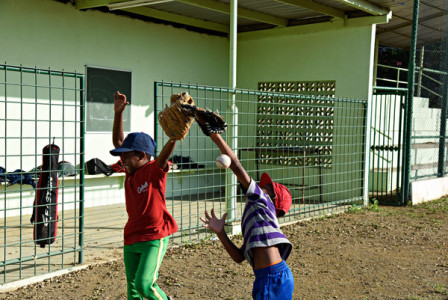
Marchena Hardware players warming up before a practice. Credit Melissa Lyttle for The New York Times
“That’s the side where we go to the beach,” the younger Gregorius said. “The sharks are on this side.”
On a street next to the field, a silver sport utility vehicle passed two donkeys trundling along with some boys near a patchy soccer field.
Baseball is big on the island, but so is soccer. At places like the tiny Netto Bar in Otrobanda, one of the oldest bars on the island, televisions are often tuned to soccer in the winter and baseball in the summer.
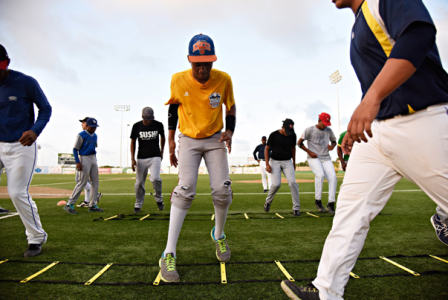
Meulens, who helped develop baseball in Curaçao through winter clinics, was always popular here as a player. But since he became the hitting coach for the San Francisco Giants, winners of three World Series in the last five years, his popularity has soared. He also managed the Netherlands to a fourth-place finish in the 2013 World Baseball Classic and has a street named after him.
“Scouts didn’t really come here before Hensley,” said Ben Thijssen, the third-base coach for the Dutch national team, who moved from Curaçao to the Netherlands to play professionally but recently returned. “Now every team has a part-time scout here.”
In Curaçaoan baseball, everybody knows everybody else, and the phrase “I played with his father” is almost as common as “con ta bai,” a greeting in Papiamento, the island’s most widely spoken language, which incorporates Dutch, Spanish, English and Portuguese.
During a recent Dutch Caribbean Baseball Academy training session at Tio Daou Ball Park, Curaçao’s main field, Thijssen took a fungo bat and pointed to Philip Elhage, who first directed the Yankees to Meulens in 1985 and now scouts for the Giants.
“This is the man who started it all,” Thijssen said.

Actually, Elhage said, baseball in Curaçao can be traced back eight decades, to two teams: Quisqueya, consisting of Dominican laborers, and Deportivo, made up of Venezuelan fruit sellers in the port area Otrobanda.
Elhage recounted the history while eating at an outdoor restaurant near Mambo Beach, on the southeast coast. He was greeted by several passers-by but not, he said, because he is Meulens’s godfather or because he once hit a memorable home run with a broken wrist at the 1983 Pan-American Games in Venezuela.
“My sister was the prime minister,” he said, almost as an aside, “so people know me.”
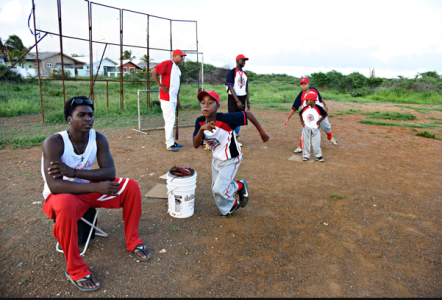
Emily de Jongh-Elhage was the prime minister from 2006 until the dissolution of the Netherlands Antilles in 2010. Now, like Aruba, Curaçao accepts military protection from the Netherlands and its citizens still have access to Dutch universities and scholarships.
The island’s emphasis on education, the Cincinnati Reds scout Jim Stoeckel said, serves Curaçaoan players well, especially when they arrive in the United States able to speak English and Spanish.
Stoeckel, who has been coaching and scouting Dutch baseball players since 1981, first spotted Gregorius, then 16, playing with the Dutch Antilles team at an under-18 tournament in The Hague in 2006. Stoeckel helped the Reds sign him in 2007, but Gregorius was later traded to the Arizona Diamondbacks, from whom the Yankees obtained him.
“The arm is what jumped out at you,” Stoeckel said of Gregorius. “I asked him if he wanted to be a pitcher, and he said: ‘No, my dad’s a pitcher. I want to play shortstop.’ ”
A Hard-Working Family
The Gregorius family is baseball royalty in Curaçao, with three generations of professionals. (Didi Gregorius was knighted along with his Netherlands teammates from the 2011 Baseball World Cup and lists his name as Sir Didi Gregorius on Twitter.)

One of the great Curaçaoan pitchers of the mid-20th century was Juan Antonio Gregorius, Didi’s grandfather, who pitched for a local club called Lucky Strike. He stood 6 feet 7 inches and was given the sarcastic nickname Chiquitin (pronounced “cheeky teen”), which means “very small” in Papiamento. As for Didi’s father, Johannes, he had a remarkable career of his own, pitching until he was 49 and retiring two years ago.
“Yeah, for now,” Didi said with a knowing laugh.
In Tera Kora, as the sun was going down, the breeze that helps keep the temperature comfortable blew across the field, and Didi Gregorius and his father sat in a wooden dugout looking at old photographs. They laughed and reminisced in English and Papiamento about the father’s fastball and the son’s dazzling double-play combination with Simmons, with whom he played on the Marchena Little League field, the same field where Profar emerged a few years later.
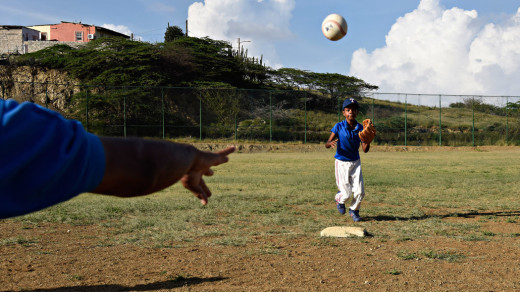
Gregorius was born in Amsterdam on Feb. 18, 1990, when his father was pitching for the Amsterdam Pirates in the Dutch professional league and working as a carpenter. His mother, Sheritsa Stroop, was a good softball player, and his older brother, Johnny, was a professional pitcher in Europe who now works at the Curaçao airport.
“That’s a hard-working family,” Elhage said.
Gregorius’s father, a relentless worker, would run between innings when he pitched. A few years ago, while pitching in Curaçao’s top division, Gregorius threw 16 innings on a Saturday and came back to throw six more in relief that Sunday, running in between innings as always.
Asked to describe his pitches, the elder Gregorius narrowed his eyes and said, “Straight gas.”
Didi Gregorius started playing T-ball in the Netherlands before moving to Curaçao when he was 5. He played soccer and basketball, too, but blossomed at baseball.
At the Marchena field, Gregorius had a stunning view of a mountain in front of him and a promising shortstop to his right. Simmons was said to have more range while Gregorius made better relay throws, which is why they played where they did.
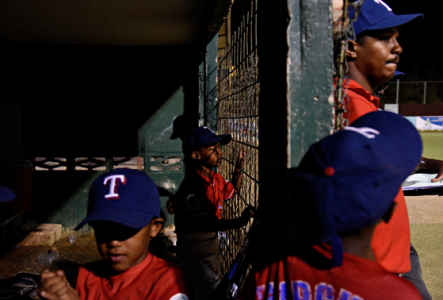
“We just went where they told us to go,” Gregorius said. “All we cared about was playing.”
On that same field last week, Profar’s younger brother, the 7-year-old Judrick, wore a Rangers jersey, a gift from his brother, with the name of Ian Kinsler, now a Detroit Tiger. Judrick practiced taking ground balls on the same rocky terrain on which his older brother, Simmons and Gregorius all learned to make great plays.
“I don’t think anyone there would be surprised,” Preller, the Padres’ G.M., said, “if one day that kid ended up in the big leagues, too.”
Bron: NYTimes
